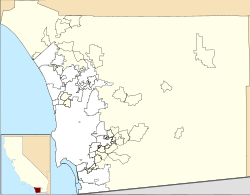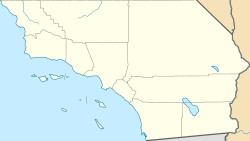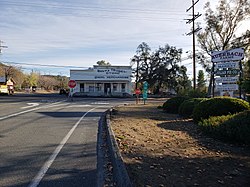Santa Ysabel | |
|---|---|
 | |
| Coordinates: 33°6′33″N116°40′23″W / 33.10917°N 116.67306°W | |
| Country | |
| State | |
| County | San Diego |
| Time zone | UTC-8 (Pacific (PST)) |
| • Summer (DST) | UTC-7 (PDT) |
| ZIP codes | 92070 |
| Area codes | 442/760 |
Santa Ysabel (Spanish for "St. Elizabeth") is an unincorporated community in the Santa Ysabel Valley of eastern San Diego County, California.





